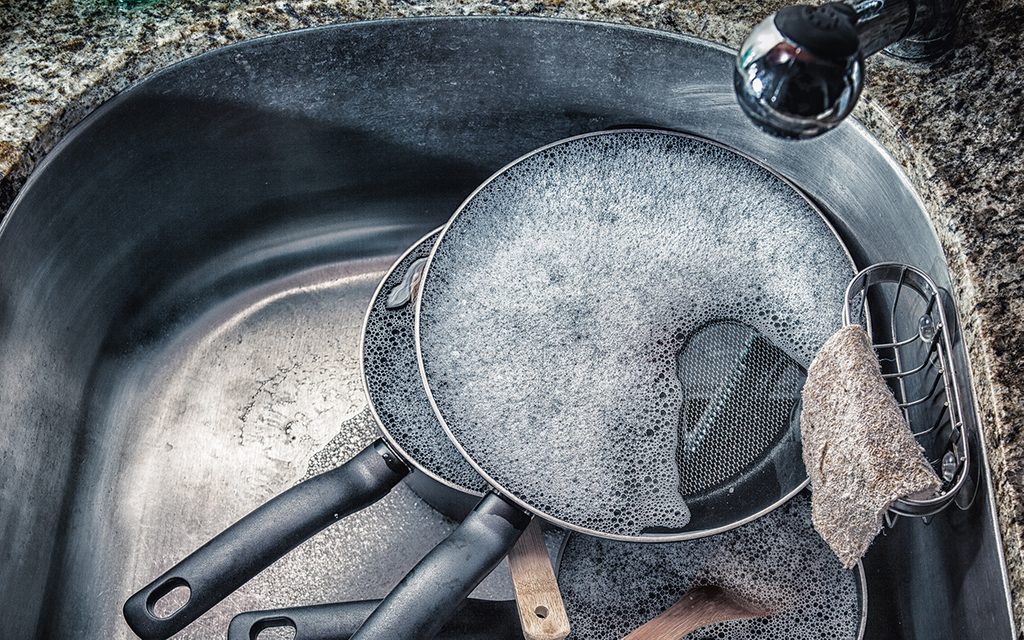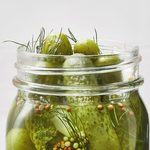The One Thing You’re Doing to Your Frying Pans That Can Ruin Them

If you're putting hot pans into the sink to make them easier to clean, please stop!
Never Do This to Your Frying Pans
If you invite me over for dinner and place your hot pans in the sink as you finish cooking, you’ll probably see me physically cringe. I’m not trying to judge; I’ve done it before, too. It’s tempting to use the sink as a way to make space on the stovetop, or maybe you have an especially disastrous pan that looks like it could benefit from a long soak.
But that sizzling sound is in an indication that something nefarious is going on. Putting a hot pan in cold water causes something called thermal shock. It can ruin your pans—even the expensive ones.
What Is Thermal Shock?
There’s a lot of science here, but basically, metal expands as it’s heated. Most pots and pans are made from multiple layers of metal, like stainless steel and aluminum. They may also have an enameled or nonstick coating. Each of these materials expands and contracts at different temperatures, which you never notice when the change happens gradually. For example, when you slowly warm a pan on the stovetop or let it come down to room temperature naturally, the layers of metal expand together.
The problem arises when you introduce a sudden change in temperature, like putting a hot pan in cold water. The metals cool too quickly and the pan actually starts to pull against itself. The bigger the temperature difference, the greater the shock, but even a small amount of cold water in the bottom of your sink can cause a pan to warp, shatter, crack or chip.
Warped pans are a major problem because they won’t cook evenly. They allow oil to pool on one side or the other, and they certainly won’t sit flat against an induction or electric cooktop. Even if your pan doesn’t warp, the finish can come off, and that chipped enamel or nonstick coating may find its way into your food. No, thank you!
How to Properly Care for Your Pans
The best way to avoid this type of damage is to let your pans cool down gradually on the stovetop. If you need to make space, place the pan on a trivet or another heat-proof surface. If you’re using your granite countertops, be sure to wipe them clean first so the pan doesn’t accidentally sit in a puddle of water.
You should be especially careful when it comes to thin nonstick pans and cookware made with glass or stoneware, as these are the most susceptible to thermal shock. You’ll have better luck with thicker, well-constructed pans, but that doesn’t mean you should put your All-Clad stainless steel or cast-iron skillets straight into the sink. After letting these types of pans cool briefly, you can speed up the cooling process by adding small amounts of tepid water.
Next, find out 21 surprising ways you’re shortening the life of your dishwasher.



